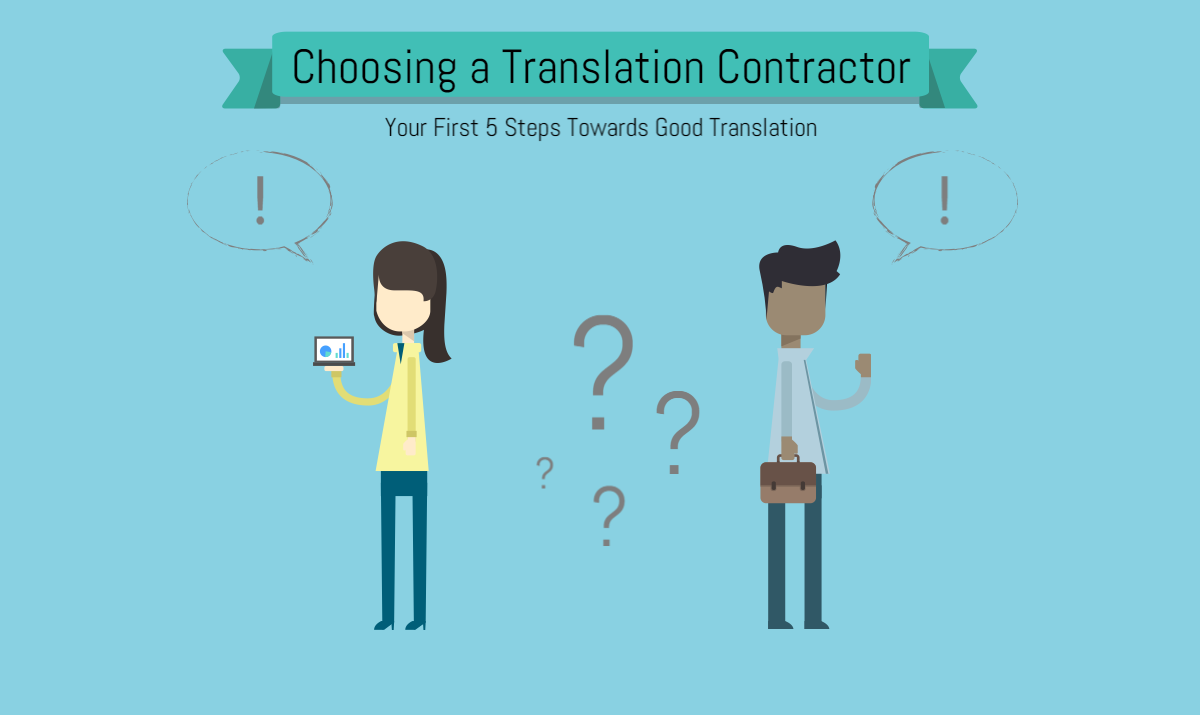Many companies, when they decide to translate documentation, don’t know how to start, which causes undesirable mistakes. That is why we suggest you 5 trustwoorthy steps that will help you choose a proper translation contractor.
Step 1. Determine Requirements
The best definition of good quality is simply what meets your expectations. For this purpose it’s really good to know what you really want from the translation. Are you planning to use it internally (and pay thus a lower price), or you need to use it for sales (which means higher prices charged for marketing translations)?
A professional translation team would ask you several questions to understand your requirements to their translation. Except for the usual things like target audience, language pairs or time-cost priorities, good questions are:
• Which file format you want to receive from your translation team?
• What is the subject area of your text?
• Do you have a specialized glossary for your texts?
• Who can resolve queries to the meaning of the source text (a contact person from your side)?
Step 2. Order Localization, not Translation
The service you need highly depends on your target audience. Every language has text elements that cannot be equally rendered during translation. Why? Because the things they describe are just absent from this or this or that culture.
Localization happens when a close substitute is found, or even when something is invented to convey the source meaning without corrupting it. For example, such inventions usually happen:
• when you localize names of characters in games;
• when you want to localize assets like locations or software features;
• during transcreation for marketing texts.
Step 3. Ask for a Glossary
Don’t you have a glossary or a terminology list for your text? Don’t worry. Ask your translation vendor to create one for you. A good contractor will most probably offer this service to you. Why is this needed? You can apply term translations in every text of the same subject area, and consistency will be maintained across all such texts. This will add to quality of your texts.
Step 4. Test Your Translation
 To make sure the translation is fine check it in the final format. Keep in mind that Russian and Ukrainian translations are usually longer than their English originals. Thus, they require more space.
To make sure the translation is fine check it in the final format. Keep in mind that Russian and Ukrainian translations are usually longer than their English originals. Thus, they require more space.
Ask your vendor to check the target text when it is converted into the final format (if they don’t include it into their standard service). If you translate software prepare instructions on length restrictions for software strings. Remember to discuss quality control step (e. g. linguistic or localization testing) with your contractor. If they have a working procedure for testing, this will certainly be a plus to them.
Step 5. Take Part
You can save your own time and money if your translation team gets clear instructions and answers to all their questions related to the project, even if they seem more than evident to you. Be careful if no questions are asked. Questions are good way to learn your expectations. If you feel like you and your vendor read from the same page then you’ve found the perfect one!
This article belongs to the vast “Explaining Translation” cycle. We aim to help you understand translation as a process. Check other Explaining Translation articles to learn everything you need to know about translation and localization. Don’t miss our upcoming blog updates – follow us on Twitter!




